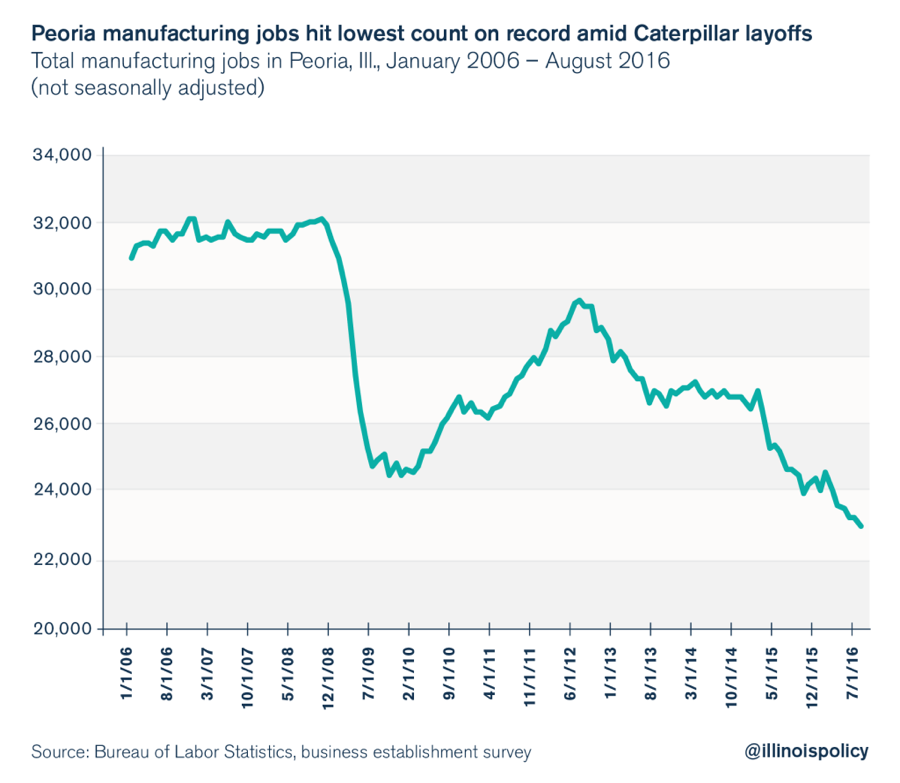The caterpillar is a symbol of metamorphosis. Given it transforms from earthbound larvae to airborne pollinator, you might call it a symbol of upward mobility. In the Peoria Metropolitan Statistical Area, located in the heartland of Illinois, it was the 1925 arrival of earthmover manufacturer Caterpillar that provided the biggest lift to that region's fortunes.
Last year, Caterpillar announced it would move its world headquarters from Peoria to Chicago, adding one more hit to a local economy that had been losing altitude for some time.
It's no surprise, then, that the Peoria Metropolitan Statistical Area's spot near the bottom of the recent 12-month VeroFORECAST of projected rates of U.S. real estate appreciation is tied to recent developments at the 93-year-old manufacturer.
The Veros Real Estate Solutions' VeroFORECAST that was released on March 1 predicted changing property values across 342 U.S. metro areas through March 1, 2019. Of those, all but 10 showed some appreciation in value. One was predicted to remain unchanged while some depreciation was forecast for the other nine. As I discussed in this series' previous HousingWire column, Atlantic City had the most-dire forecast with a predicted -2.9% decline in property values. With a projected -0.6% drop in home prices over the next year, Peoria and its surrounding MSA ranked the fifth lowest.
THE PEORIA MSA
There are five Central Illinois counties within the Peoria MSA: Peoria, Marshall, Stark, Tazewell and Woodford. The city of Peoria is the anchor, with the greatest population and employment base. According to the Greater Peoria Economic Development Council, the city of Peoria had the largest 2015 population among the MSAs cities, with 115,820 residents. That statistic from a 2014 U.S. Census Bureau estimate showed a big drop in numbers to the next four largest cities in the MSA, which ranged from Washington to Pekin.
Greater Peoria's population has been relatively flat over the past decade, with its Economic Development Council showing less than 3% growth from 2000 to 2014, from 394,600 to 405,850. Its unemployment of 4.6%, roughly half a point above the current national average, contributes to the sluggish VeroFORECAST for the next 12 months.
It wasn't until the end of 2008, when the economic crisis reached its crescendo, that manufacturing jobs in Peoria nosedived. Along with other loses, Caterpillar announced layoffs around the end of that year that added to staggering job loss (see the chart below from the Bureau of Labor Statistics). In a September 2016 analysis on the Illinois Policy website, Michael Lucci laid some of the blame at the state government, which he said, "has done much to weaken cities like Peoria by making them unattractive for new production investments, whether from Caterpillar or other companies. And that means state government is a major impediment to creating jobs middle-class workers need to support their families. Peoria is a case in point."
The previous year, it had appeared the economy would again take flight when Caterpillar announced plans to build an $800 million campus in downtown Peoria for its world headquarters. Early last year, that proposal was shelved in favor of moving the headquarters to suburban Chicago.
City officials were quick to minimize the impact on the employment base. Peoria's Journal Star reported in March 2017 that earlier that year Peoria Mayor Jim Ardis had called the Caterpillar's change of heart and headquarters, which unfortunately came the day before his speech, “a horrible kick in the gut.” But, he was quick to add, rising to the challenge of keeping hopes high, “We may lose 300 jobs when this is done, but we still have the 12,000-plus people living and working here when those folks leave.”




